Terrestrial Locomotion
1/21
There's no tags or description
Looks like no tags are added yet.
Name | Mastery | Learn | Test | Matching | Spaced |
|---|
No study sessions yet.
22 Terms
Primitive Grade
plantigrade - foot fully on ground
5 digits
trunk swings laterally during gait
the proximal segments of limbs are longer than the distal segments
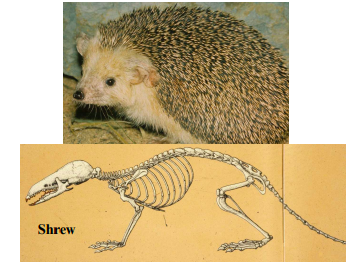
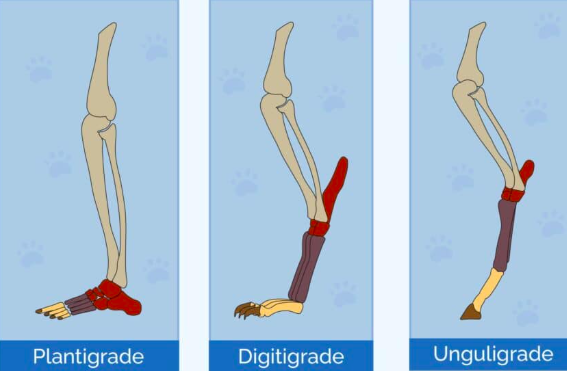
Compare plantigrade, digitigrade, and unguligrade foot postures, and discuss how these changes affect stride length, stride rate, and locomotor efficiency.
Stride Length | Stride Rate | Locomotion Efficiency | |
Plantigrade | shortest | highest | walking |
Digitigrade | medium | medium | Running + jumping |
Unguligrade | longest | lowest | High-speed running |
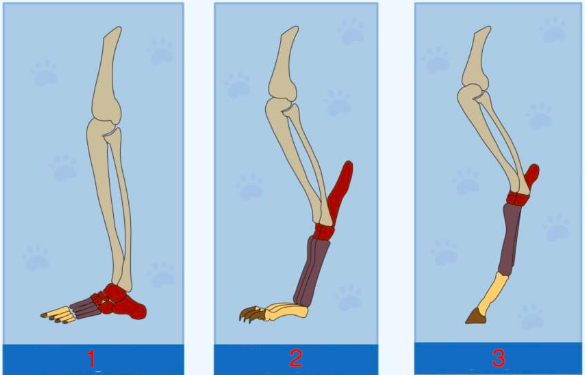
plantigrade
digitigrade
unguligrade
Adaptations for Increasing Stride Length
lengthening limbs
lengthening metacarpals and metatarsals
extension and flexion of spine
increasing rotation of scapula by loss of clavicle
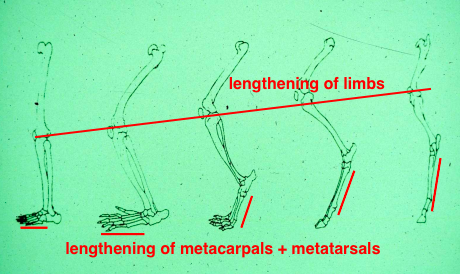
Adaptations for Increasing Stride Rate
addition of joints
change in foot posture
springing ligament
specialization of muscles
distal elongation of muscles
proximal migration
reduction of limb weight distally
Proximal Migration of muscles close to the body
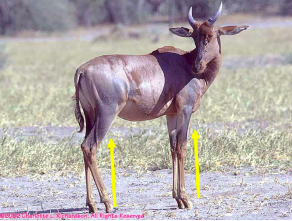
Addition of Joints: Alteration of Foot Posture
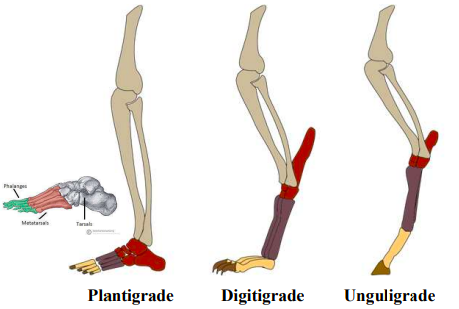
Springing Ligament
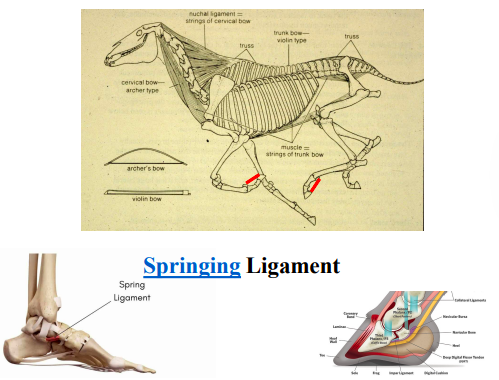
Evolutionary trade-offs in cursorial mammals (cheetah example)
can only run for short distances
have fragile bones
bad at climbing trees = need open areas
have trouble defending their young and kills
Cursorial adaptations in carnivores vs. ungulates
Carnivores | Ungulates |
|---|---|
Little digit reduction - generally 4-5 | Digit reduction |
Plantigrade or digitigrade | Unguligrade |
Saltatorial locomotion vs Ricochetal locomotion
Saltatorial is the general term for jumping, while ricochetal is a specific type of saltatorial locomotion that uses only the hind limbs to hop (kangaroos).
Adaptations for Saltatorial Locomotion that enable efficient hopping
hindlimb elongation
tail counterbalance
tendon elasticity
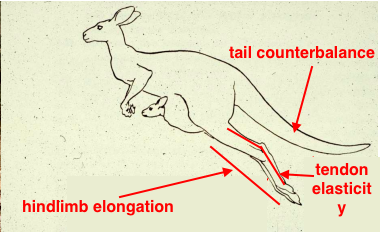
Energetic and ecological advantages and disadvantages of saltatorial locomotion
Advantages | Disadvantages |
Quick acceleration | Increased energy costs for slow locomotion |
Saves energy when in an area with widely dispersed food resources | Reduced maneuverability |
Faster aerobic speeds | Difficult to exploit dense patches |
Graviportal adaptations in large-bodied mammals (ex., elephants)
heavy, pillar-shaped limbs
unreduced distal limb bones
large surface area to feet
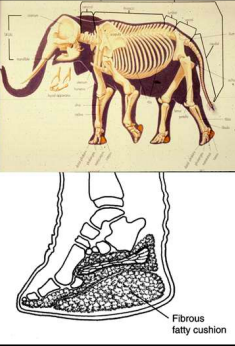
Adaptations for Brachiation Locomotion
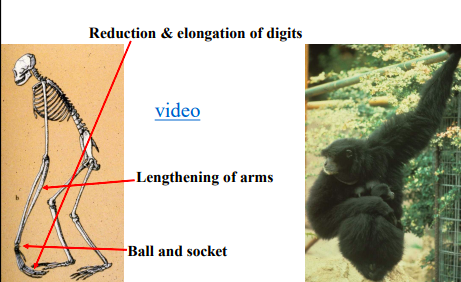
Adaptations for Scansorial Climbing Locomotion
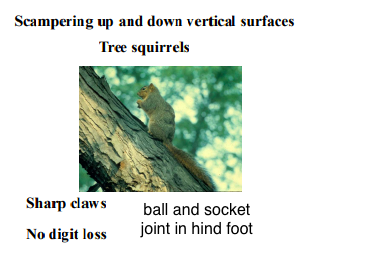
Adaptations for Sloth-like Locomotion
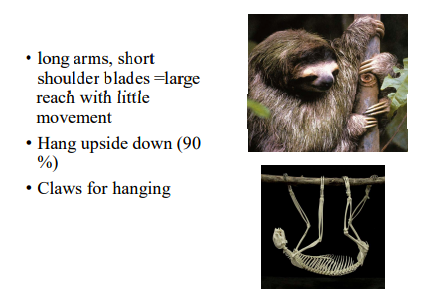
Analyze the role of claws, prehensile tails, elongated arms, and specialized joints in facilitating arboreal life.
claws → climbing, gripping, hanging upside down
prehensile tails → extra limb to hold onto branches, counterbalance
specialized joints → maneuverability and stability
elongated arms → swinging from tree to tree
Fossorial adaptations in rodents and moles + explain how they support digging.
enlarged front claws → act as shovels and push dirt aside
large muscles → more force behind digging
fusiform body → minimizes friction = moves efficiently through tunnels
small ears and eyes → prevents dirt from getting in them, not needed senses
short hair that stands straight up → can go forwards + backwards through tunnels
Skeletal changes that show the evolutionary shift from knuckle-walking/arboreal locomotion to bipedalism in primates.
S-shaped spine
legs under head + trunk
knees point forward
big toe parallel
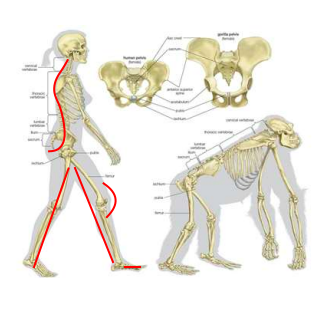
Hypothesized benefits of bipedal locomotion
better view of predators
reach higher fruit
carry food + kids in variable environments
more energy efficient to walk
Endurance running adaptations in humans
nuchal ligament
tendon that connects the skull to the neck
stabilizes the head - smoother, stabler run
short toes
reduces the work required to stabilize the foot joints when running
plantar arch
acts as a spring when running
hair reduction
efficient at cooling throughout the run, while the prey overheated